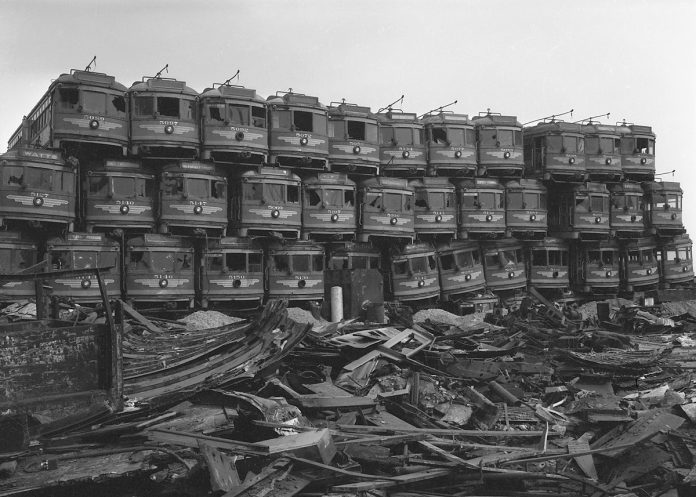
Prof Dr Michael Düren from Justus Liebig University Giessen shares his expertise on infrastructure and jobs for both energy and mobility
COVID-19 is like a dress rehearsal for climate change! We learned that modern society could transform drastically within months. We also saw that the general population widely accepted drastic measures to limit the pandemic after it understood the new situation.
When we studied climate change, we realised that the effects on our civilisation will be much more dramatic compared to this pandemic and we know that there is a strong time pressure to act. Nevertheless, we talk about smooth transitions, bridging technologies, saving jobs and investments in obsolete technologies, instead of declaring an emergency. For good reasons, politicians want to avoid breaks in society and the economy, but people see the breakdown of ecosystems coming, where a mass extinction of species occurs, and human civilization is challenged by extreme weather conditions, drought, famine, economic breakdown, wars and further pandemics.
As a scientist, I want to bring your attention to the technical limitations of global transformations and to obvious countermeasures that are overdue.
Energy drives our modern life, industry and agriculture. The global energy demand per second of our society corresponds to an average of about 15,000 GW, a power equivalent to the output of about 15,000 nuclear power stations [1]. More than 80% of this demand is provided by fossil fuels today, most of which have to be replaced by renewable energy within 15-30 years according to the Paris Agreement and the European Green Deal. The most economical way of an energy transition – not only from the financial perspective but also from the point of sustainability – is the construction of numerous solar and wind power stations in areas where the sun and the wind are abundant. Despite decades of research and political promotion, the total share of solar and wind energies is still below 2% [2] of the total world energy consumption. As a physicist, I can not believe anybody who claims that a less than 2% progress within the last 40 years will suddenly become more than 80% within 20 years without a strict and forward-looking roll-out plan. But where is this plan?
What is the highest priority for the energy market? We need to roll-out investments in infrastructure early enough before we are paralysed by energy scarcity. Solar power stations in the deserts of the world, wind power stations in coastal areas and offshore, and a grid of HVDC power lines across countries and continents are the crucial parts and key components of an efficient energy transition. Also, we need storage capacities for energy: efficient short-term storage to average out the volatilities in power production and consumption, and cheap long-term storage in the form of hydrogen gas storage or storage of other chemical energy carriers. For these energy carriers, the required infrastructure (electrolyser, fuel cells, pipelines, etc.) has to be built. All that needs decades of work. It will be limited by qualified manpower andresources.
It will be the new normal that energy is costly and valuable, and people will get used to the fact that during certain times of the day or year, energy usage is limited to essential functions, just like people understand today during COVID-19 times, that a gathering of people at concerts or soccer games are restricted. Today’s financial systems are probably not ready to fund a global abrupt energy transition. We have to adjust our whole economic system to match our future world.
Transport of people and goods is the “driver” of our society and economy. Today’s transport of people is dominated by individual cars and planes, the transport of goods by individual trucks and vessels. All that is based on fossil oil, a product that has to be replaced completely within the coming decades. Will that be possible? While the industry is still discussing technologies: electric battery vehicles versus hydrogen fuel cells or combustion engines with synthetic fuels, time is running out. There is no convincing plan that provides a sufficient replacement for today’s oil consumption. From the physics point of view, the choice of technology seems obvious: We need that kind of mobility that needs a minimum amount of energy, which is — for physics reasons — an electric railway infrastructure at large scale, as it was common in the times before oil and petrol were extensively available.
Don’t fool the people! Many, especially young people, have a dark picture of their future: Being out of work, having no perspectives, being replaced by robots and artificial intelligence.
Dear colleagues, please be honest! Tell the people that the change in society will be significant. It will challenge mankind, but it will bring new opportunities and we all will have new tasks! People that know the facts can start to prepare themselves. They can learn to operate a modern tram instead of driving a taxi. They can learn to install rails instead of building highways. Don’t be afraid to tell people in coal mines and oil refineries that they will lose their jobs. Set up a social security system and let them learn how to insulate houses or how to produce solar panels and wind farms. People understand. Don’t close their eyes until the catastrophe is at the front door. Let the change in now!
References
[1] Michael Düren, Understanding the Bigger Energy Picture – DESERTEC and Beyond, SpringerBriefs in Energy (2017), https://doi.org/10.1007/978-3-319-57966-5
[2] Total primary energy supply by fuel, 2018, https://www.iea.org/reports/world-energy-balances-overview#world
[3] Los Angeles Times photographic archive, Digital collections — UCLA Library, https://commons.wikimedia.org/w/index.php?curid=17711798
*Please note: This is a commercial profile










